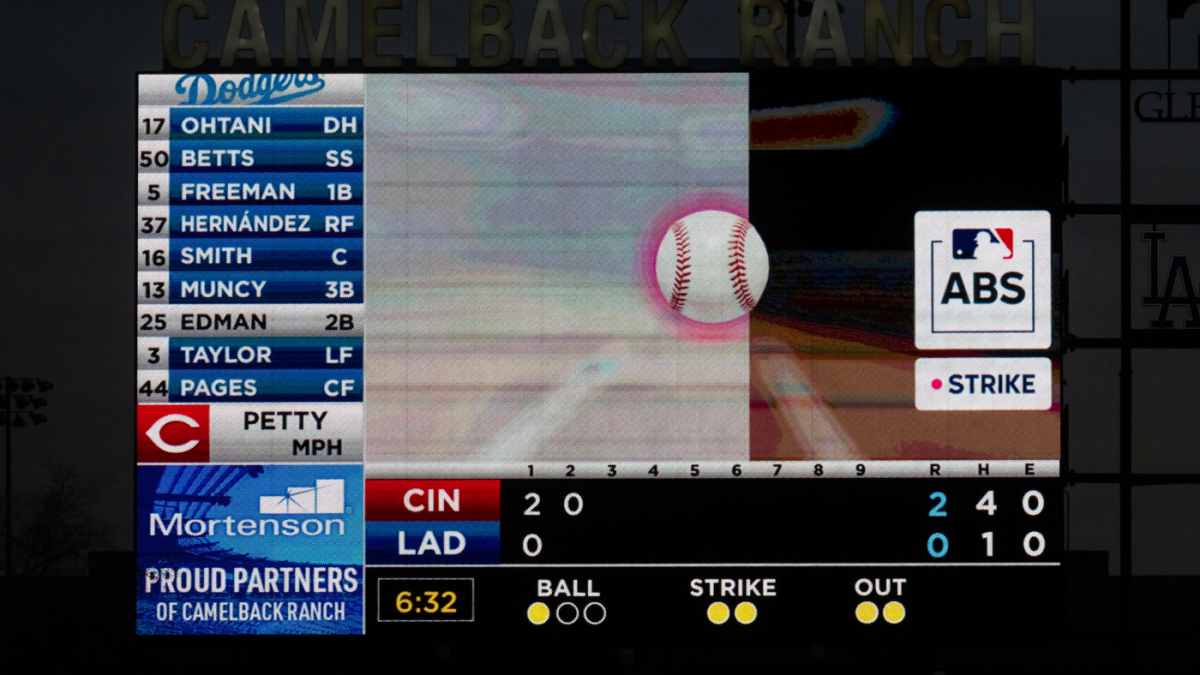

Tuesday night’s Major League Baseball All-Star Game at Truist Park in suburban Atlanta will feature the automated ball-strike (ABS) system that could be part of the league on a regular basis as soon as next season. The ABS challenge system, in which catchers or hitters may request video reviews of a limited number of ball or strike calls, will be in place for Tuesday night’s game.
As CBS Sports detailed back when the system was introduced to the majors during spring training, ABS is based on individualized player heights — not just a generic strike zone that broadcasts tend to employ. The “challenge” aspect, meanwhile, sees the human umpires retain most of the strike-calling. The hitter or catcher signals a challenge by tapping the top of their helmet, and then replay determines the correct call. Each team will be allowed two challenges; if they are correct, they retain the challenge, much like the existing replay system. During spring training, 617 of 1,182 challenges, or 52.2%, were successful, according to the league.
The ABS system has been in place for some time in the minor leagues, and in action it looks like this:
How does ABS work?
ABS functions by using advanced camera and limb-tracking technology to craft individualized strike zones and determine pitch location. A few years ago, engineers familiar with the inner workings of ABS explained that it features four discrete subsystems:
- The MLB tracking system;
- An interface the ballpark operator uses to set the correct batter;
- An MLB server that receives the tracking data and has the ball-strike evaluation code;
- A low-latency communication system to relay calls to the umpire
The individualized strike zone aspect cannot be stressed enough as a positive. Anyone who has watched a ballgame featuring a generic strike zone overlay knows that there are no attempts at adjusting for the batter’s stance. The box stays the same for Aaron Judge and Jose Altuve. That won’t be the case with ABS, which will lean upon the aforementioned limb-tracking technology to enhance its strike zone rulings.
Baseball America explained that process in more detail last summer: “The new zone will mean each player’s strike zone is uniquely tied to their body and stance rather than a universal formula. The new strike zone is hoped to more closely resemble the strike zone used by human umpires, although the top end is still designed to be lower than the top end of the MLB strike zone.”
When could ABS come to regular-season MLB games?
MLB commissioner Rob Manfred recently said he’ll propose use of the ABS system to the competition committee in the hopes that it can be adopted in time for use in the 2026 regular season. As has been the case at other levels and games, the challenge system would be used as opposed to a full ABS system in which every called ball or strike is automated.
While it remains to be seen whether players are actually willing to challenge ball-strike calls in an All-Star Game, the marquee event would indeed serve as a conspicuous rollout of sorts for the system.
This news was originally published on this post .








Be the first to leave a comment